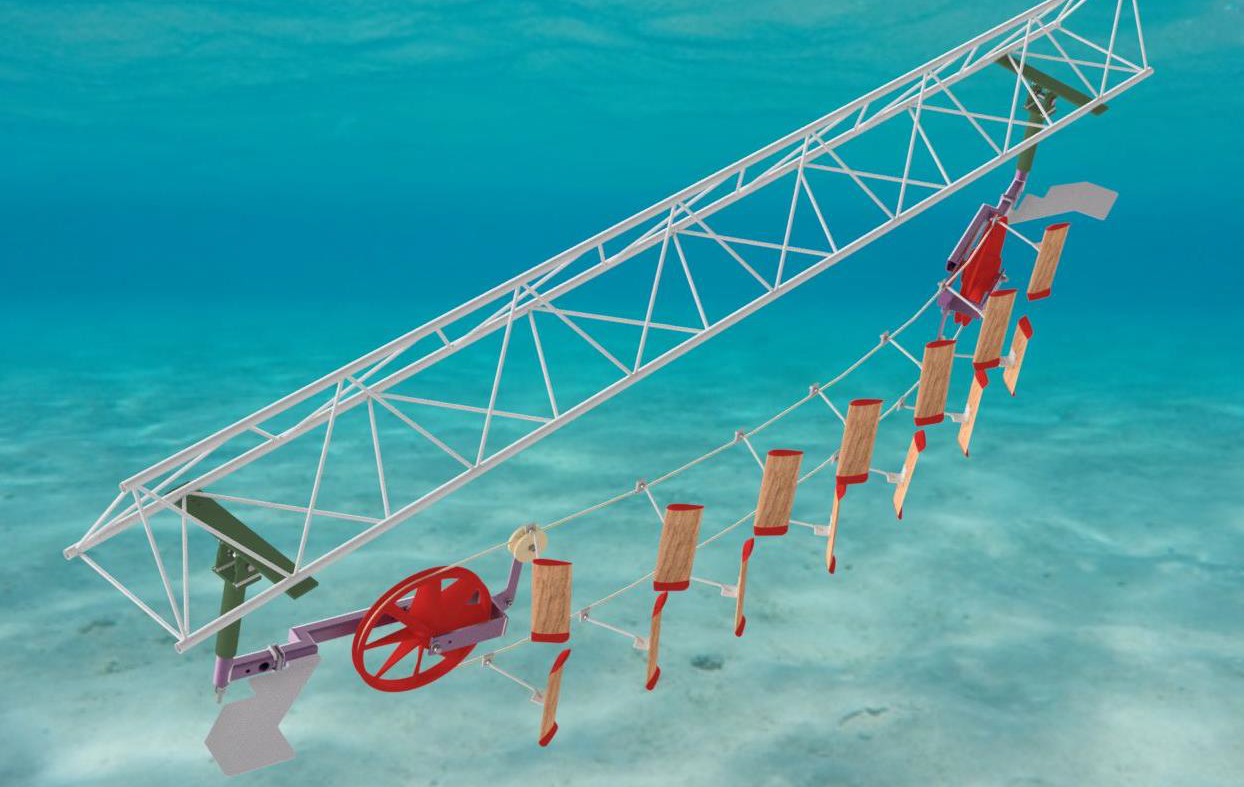The energy transition is one of the most significant social challenges of our time. A reliable, climate-friendly energy supply at affordable prices is of fundamental importance. In addition to the associated social and technical challenges, the instability of renewable generation sources is particularly critical in Central Europe. This means electricity generation fluctuates depending on the weather, season, and time of day. Photovoltaic power generation, in particular, is only significantly available for up to half of the year.
To secure the energy supply, the following problems must therefore be taken into account in particular: the need to provide large excess capacities; the stability of the electricity grid is at risk if too little or too much electricity is fed into the grid; technologies for long-term storage, which are still lacking, must be developed. The need for continuously available or plannable renewable energy sources is therefore urgent. Tidal currents are an energy source that can also be used in large quantities but is rarely utilized. With the help of innovations and new technologies, these energy sources can be used better and more efficiently to tackle the challenging task of the energy transition.
As part of the energy transition, the European Union (EU) also focuses on expanding renewable ocean energy as part of the Green Deal. The EU defines ocean energy as tidal energy in particular. The requirements for developing technology are high due to the specific location. The operation requires the system to be installed in a maritime environment, mainly in salt water. Extreme weather conditions are also possible. This involves the use of the most straightforward and robust technical components possible. In addition, simple installation and maintenance are necessary to ensure cost-effective and stable operation. Ropeways fulfill these characteristics. They are already exposed to the harsh climatic conditions in the mountains and must also be easy to maintain. The main difference is that today's ropeways cannot yet be operated underwater. Therefore, the question of how cable car technology can be used for tidal power plants is currently being addressed.
Most current solutions based on tidal currents can only use high-speed currents; technological solutions that use slow and medium-speed currents are still rare. However, Europe has almost all the potential in this area, so that a prototype will be developed for commercial use. In the context of this project, the planned installation is essentially a cable car in which flow profiles replace the chairs or cabins. The profiles are connected to the cable via a hanger in the same way as the cable cars. This creates a stable kite that lies in the ocean current and develops a powerful forward movement, which acts on generators to produce electricity via the cable and the deflection pulleys.
The project to design and develop a CableKites tidal power plant is a highly interdisciplinary development project with major technical challenges in various engineering fields.
The first phase analyzes potential development sites for the technology in Europe. Based on this, the possible areas of application and limits of the technology are derived. The second phase of the project involves the development of a prototype. Four key factors need to be taken into account in this phase. Firstly, the ropes have to be designed and the rope lines calculated. Since, in contrast to the calculations for aerial ropeways, the lateral forces generated by ocean currents also have to be considered, the traditional calculation methods have to be extended. In addition, the kites are also being developed in this project phase. Here, geometries must be found that are stable under the prevailing conditions and provide sufficient tensile force for the cable. The ropeway components must be designed in such a way that they function safely and robustly. This includes the components of the stations, the rope clamps, and the generator string components. Ultimately, all components of the CableKites system must be adapted to the marine environment. Particular attention must be paid to the low-maintenance design of the system, as the usual maintenance intervals for aerial cableways cannot be adhered to for an underwater cableway. In the project's final phase, the prototype developed is to be tested in the Stadtwerke München (SWM) plant canal. In addition to technical feasibility, economic and ecological aspects will also be taken into account.
The project CableKites is funded by the Central Innovation Program for Small and Medium-Sized Enterprises (ZIM).
